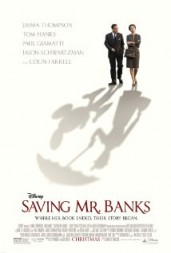I watched Saving Mr. Banks (2013), the touching movie about the creative conflict between Walt Disney (Tom Hanks) and Mary Poppins author P.L. Travers (Emma Thompson), with my family over the holidays. A few energy and water references merit sharing.
While riding in the limousine in one of the early scenes of the movie, P.L. Travers (from drought-stricken Australia) is speaking with her chauffeur Ralph (Paul Giamatti). Upset about his pleasure that it is a sunny day, she counters, “Rain is life.” He responds, “So is the sun.” These subtle paeans to the life-giving value of water and renewable energy are uttered in relief against the fossil-fueled modernity of limousines, pumpjacks, and movie studios.
In addition to that exchange, I also noticed that the movie provides appropriate references to the energy landscape of the three featured locations. Early scenes in Australia show a coal-fired train, no surprise given the era (early 1900s) and location (Australia, which is a major coal producer). A scene set in Los Angeles shows oil pumpjacks outside P.L. Travers’s limousine window on the way to Disney Studios (again, no surprise, as Los Angeles has been a major oil producing region since oil was first produced in the city by tycoon Edward Doheny in 1892). Scenes in urban London show nothing notable other than electricity in the homes aside from some fireplaces and chimneys (fitting, as urban London of the era had moved to the convenience of electricity by this point).
All in all, it was an enjoyable movie, and I was pleasantly surprised by its subtle energy references.



 Hydropower Saves The Fugitive
Hydropower Saves The Fugitive